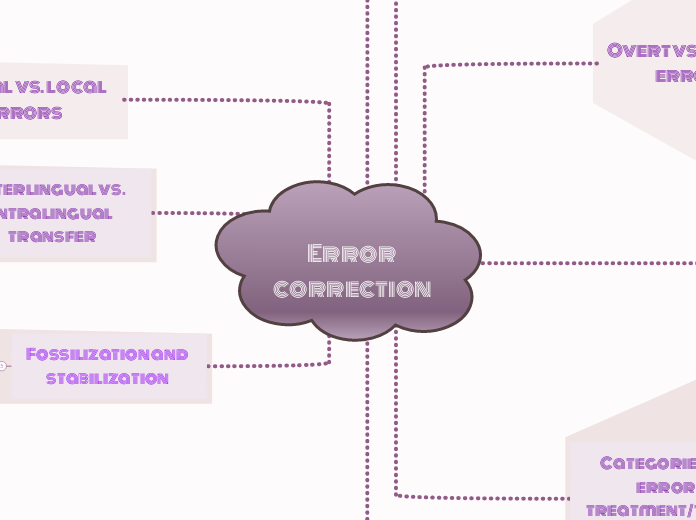Error correction
Additional info
Additional info
Additional info
Mistakes vs. errors
Mistakes
Mistakes are unintentional errors in language use that occur due to lapses in attention, or other cognitive factors. They usually happen when a learner knows the correct rule but fails to apply it correctly in a specific instance.
Mistakes can vary in severity and might not consistently reflect the learner's overall language competence. Learners are generally capable of recognizing and correcting their mistakes once they are pointed out.
Errors
Errors are systematic deviations from the norms of a language and often occur due to a lack of knowledge or misunderstanding of the rules.
Errors indicate gaps in the learner's language competence and may require more focused attention and learning to rectify. They can be classified into grammatical, lexical, and pronunciation errors.
Examples
Overt vs. Covert errors
Overt
Overt errors may result from lapses in attention, memory, or application of rules. Learners can often correct overt errors on their own once they become aware of them.
Overt errors are errors that are noticeable and obvious to both the learner and the listener or observer. These errors are often easily detectable and can be recognized by the learner as mistakes in their language use.
Covert errors
Covert errors are errors that are not readily noticeable or obvious, either to the learner or to others.
Covert errors might indicate a more complex issue in the learner's understanding of the language rules and require careful analysis to identify and correct.
Additional info
Additional info
Additional info
Categories of error treatment/types of feedback
Recast
clarification request
Metalingüstic feedback
Metalinguistic feedback refers to a type of feedback provided in language learning scenarios where individuals receive guidance and commentary on various aspects of their language use. Unlike direct correction, metalinguistic feedback involves explicit discussions about grammar, vocabulary, syntax, and other linguistic elements.
Elicitation
Explicit correction
Additional info
Repetition
Repetition is a technique and communication strategy employed in language learning and teaching. It involves the deliberate reiteration of words, phrases, or sentences. Repetition serves various purposes, such as reinforcing vocabulary, grammar, and memory retention.
Categories of errors
Addition
Omission is a category of error within language learning where students unintentionally leave out essential elements from their speech or writing. This error involves excluding words, phrases, or information that are necessary for conveying a complete and coherent message. Omissions can occur due to factors like incomplete grammar knowledge, hasty communication, or a lack of vocabulary.
Additional info
I
Substitution
Substitution is a category when a language student replaces one element with another in speech or writing. This type of error involves using incorrect words, phrases, or grammatical structures that may not convey the intended meaning accurately. Substitutions can arise from limited vocabulary, confusion of similar-sounding words.
Additional info
Ordering
Ordering is a category of error that pertains to the incorrect arrangement of words, phrases, or clauses in spoken or written language.
I may go to the bathroom?
